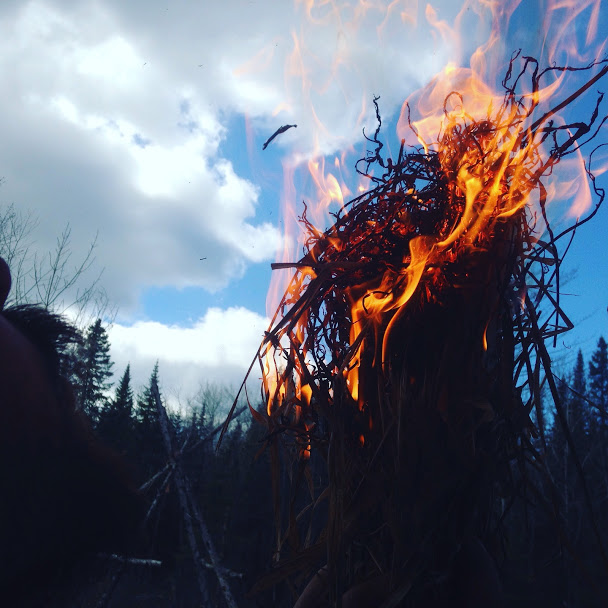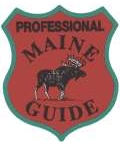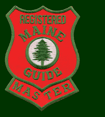A little secret: wilderness survival is pretty simple. Challenging, deadly, intense, abnormal, chaotic or whatever adjective you deem appropriate is par for the course but your plan of attack to mitigate those nasty adjectives should be based on very basic and simple concepts instead of on expensive gear or attending celebrity weekend courses. I know that this idea could and probably will be met with objection from the gear peddlers and some other wilderness instructors, but oh well, I’d trade a little trolling for clarity to an issue that might be the difference between you seeing your loved ones again and ending up a footnote in the next overplayed and regurgitated survival book. What you need to ask yourself is can you make a fire, can you disinfect water and can you relax? While these are skills to learn for sure and are best learned from a qualified and experienced outdoor professional, they are relatively easy compared to ordering coffee at StarMucks or writing code for a blog.
Any type of survival, be it in the wild and wooley wilderness or in the crazy and cacophonous city (sorry about the poor alliteration) comes down to giving your body what it needs to function, which coincidentally and conveniently you have done every day of your life, assuming you are not a zombie.
The Survival Equation:
Water + Rest (sleep, relaxation) + A well Regulated Body Temperature =
40 days/ nights of life
All that a survival situation represents is a change in the way those needs are met, plain and simple. The human body needs rest, water and a stable internal temperature, plus or minus five degrees or so. If you can focus on those 3 fairly simple needs you can give yourself at least a month of survival time, which will not be fun but will give you a good chance of being found or to find help yourself should there be no one looking for you.
*Side note: This advice is based on the fact that someone is looking for you, and if someone is looking you have good odds of being found within 3 days as the average professional Search and Rescue time is 72 hours. So leave a note of where you’re going and when you’ll be back. Side note over*
Obviously for every way life can make you miserable there are ways of complicating that simplistic statement- an angry grizzly bear, nuclear fall out, white out blizzard, or fill in the blank with your most creative scenario antagonist. But what you need to ask yourself, all crazy what if’s aside, is what is the immediate threat to your life?
A flow chart could be helpful here I suppose:
- Are you in immediate external danger? If so there is really nothing much anyone can tell you outside of general good practices like if you are caught in a rip tide to swim perpendicular to the flow, if you’re on a mountain in a lightning storm to reduce your exposure and insulate yourself from the ground or if you’re being attacked by a bear, well you probably saw the”academy award winning movie” where we all hoped the bear would win. Essentially in those moments where life is impinged by a cruel external force there isn’t a ton of help for ya’ and your long term trip on this planet is tenuous at best. If you are subject to an external force that threatens your life, deal with it because no other survival knowledge matters if you’re in the process of being eaten.
- If you are cool or have gotten through step one you have the luxury of time, usually. How you move forward should be intentional, systematic and thorough meeting those 3 simple physiological needs- hydration, rest and a well regulated body temperature.
Again, survival is just a change in the way you meet the same daily needs you have met for as long as you’ve been breathing except for feeding yourself which is a long conversation but know that you have at least a month’s worth of energy in your body without the input of food.
Here’s what you need to know to survive most crappy situations in life:
1. How to find and disinfect (not just purify) water
2. How to build a shelter to keep yourself warm, dry and safe from the elements
3. How to ignite, establish and use a fire to keep warm, disinfect water, and chase away the boogie man using a few simple fire lightning techniques
To summarize, this blog post is intended to demystify survival. It isn’t a good business plan to say so as a wilderness instructor, but it is not my intention to make a fortune holding this secret, my goal is to help you survive. You don’t need to spend a fortune on celebrity endorsed gear, you don’t need to own the best knife on god’s green Earth and you don’t need to spend a lifetime learning these skills. All you need is some basic training and understanding of what survival actually is, not what TV portrays it as. If I get enough grief I’ll write more, otherwise good luck out there and remember to stay warm, hydrated and rested.









Comments on this entry are closed.
You are absolutely correct. Identifying immediate threats is the most important skill a prepper could have. Most of the survival scenarios are fluid, meaning that the situation changes as time passes and it is up to you to make sure that those changes are favorable to you. As you clearly stated, basic needs such as water, shelter from the elements and harsh weather are the deciding factors for your survival situation. I would put emphasis on the fact that you need to keep an eye on your surroundings and any changes you might notice. Based on that information, you should ask yourself the “Am I in immediate external danger?” question regularly. Some examples of changing conditions are daylight vs night-time, extreme weather, wild animal activity (might vary from day-time to night-time), an open wound you got while looking for shelter, etc. The reason why being aware of developing, potentially threatening situations at all times is so important is because it might literally keep you alive. It also might help you prevent all sorts of danger or minimize the damaging effects if you can’t avoid it completely.
However, gear, celebrity endorsed gear and the best knife on god’s green Earth are part of prepping as a hobby. A lot of people fantasize about survival situations and make them a game. The gear they buy gives them a feeling of control (even if sometimes it is not real) in an otherwise hectic and unpredictable world. There is nothing wrong with that, the gear it might even help you in some situations. And if the gear is what got you into prepping in the first place, its mission is more than half accomplished.
The conclusion is that while you polish your brand new survival knife and read these words, you should mind Paul’s advice. Mind the basics first – risk assessment, water, shelter and fire, otherwise your shiny new tools won’t help you a single bit.
Good points, thanks Hawk.